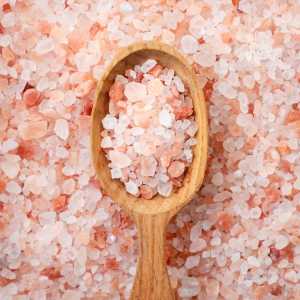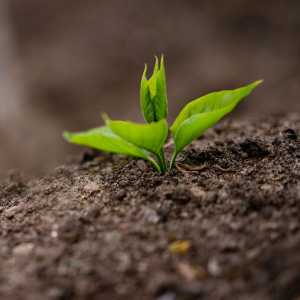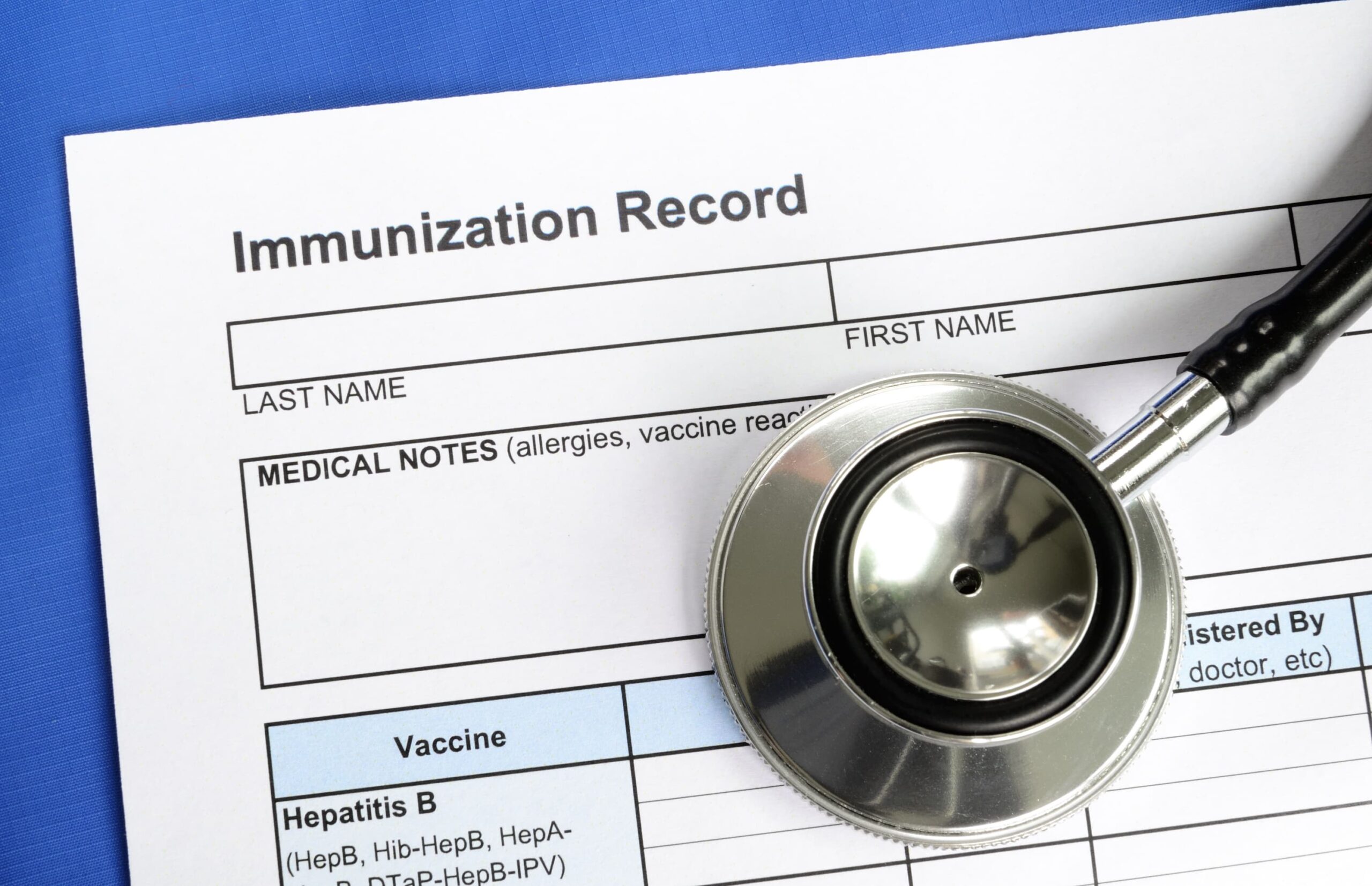Iodine is an essential trace element that plays a crucial role in overall health, especially thyroid function, and is important for the healthy development of babies, kids, and teens. This article delves into the significance of iodine as a micronutrient, recommended daily iodine intake levels, dietary sources of iodine, and iodine deficiency.
The Role of Iodine in Health
Iodine is an essential component of thyroid hormones, which are critical for regulating metabolism, growth, and development (1). The thyroid gland uses iodine to synthesize hormones that help control energy production, body temperature, and the functioning of various organs and tissues (2). A deficiency in iodine can lead to thyroid dysfunction and result in a range of health issues, including goiter (enlarged thyroid gland), hypothyroidism (underactive thyroid), and impaired cognitive function (3).
Recommended Daily Intake of Iodine
The table below shows the recommended daily allowance (RDA) of iodine by age and stage of life per the Food and Nutrition Board at the Institute of Medicine of the National Academies (1).
Recommended Daily Allowance of Iodine
| Age | Male | Female | Pregnancy | Lactation |
| Birth to 6 months | 110 mcg* | 110 mcg* | ||
| 7–12 months | 130 mcg* | 130 mcg* | ||
| 1–3 years | 90 mcg | 90 mcg | ||
| 4–8 years | 90 mcg | 90 mcg | ||
| 9–13 years | 120 mcg | 120 mcg | ||
| 14–18 years | 150 mcg | 150 mcg | 220 mcg | 290 mcg |
| 19+ years | 150 mcg | 150 mcg | 220 mcg | 290 mcg |
*The table shows the RDA for iodine, except for infants from birth to 12 months, where the FNB (Food & Nutrition Board) established an ‘Adequate Intake’ for iodine that is equivalent to the mean intake of iodine in healthy breastfed infants in the United States.
A Tolerable Upper Intake Level (UL) is the maximum daily dose unlikely to cause adverse side effects in the general population. See the graph below for the UL by age group (1)
Tolerable Upper Intake Level of Iodine
| Age | Male | Female | Pregnancy | Lactation |
|---|---|---|---|---|
| Birth to 6 months | Not possible to establish* | Not possible to establish* | ||
| 7–12 months | Not possible to establish* | Not possible to establish* | ||
|
1–3 years |
200 mcg |
200 mcg |
||
| 4–8 years | 300 mcg | 300 mcg | ||
| 9–13 years | 600 mcg | 600 mcg | ||
| 14–18 years | 900 mcg | 900 mcg | 900 mcg | 900 mcg |
| 19+ years | 1,100 mcg | 1,100 mcg | 1,100 mcg | 1,100 mcg |
*Formula and food should be the only sources of iodine for infants.
For adults, iodine supplementation within reasonable levels (150-300 mcg/day), can safely maintain healthy iodine levels without going over the Upper Intake Level of 1,100 mcg per day.
Iodine supplementation in kids and babies should always be monitored by a professional as should high dose iodine supplementation in teens & adults. High doses of iodine can cause many of the same problems that a deficiency does.
If you are concerned about your iodine intake, reach out to your doctor.
Dietary Sources of Iodine
As iodine is not made in the body, you must get it from food. Fortunately, it is found in a variety of foods. It’s important to note, however, that the soil concentration of iodine affects the amount of iodine in each crop, which, in turn, affects the amount of iodine in animal products.
-
- Seafood: Fish and shellfish, especially cod, tuna, shrimp, and seaweed, are excellent sources of iodine. A three-ounce serving of baked cod contains 158 mcg of iodine, which meets the daily minimum. A teaspoon of Cod Liver Oil contains about 140 mcg of iodine!
- Dairy products: Milk, yogurt, and cheese contain iodine, though the amount varies depending on the cow’s diet.
- Eggs: An egg contains about 26 mcg of iodine, which also varies depending on the chicken’s diet.
- Fruits and vegetables: Some plants grown in iodine-rich soil can contain iodine. A baked potato (with skin on) grown in iodine-rich soil contains about 60 mcg of iodine.
- Iodized Salt: A table salt that has been supplemented with iodine.
Is Iodized Salt Healthy?
For many Americans, iodized salt makes up a significant portion of their iodine intake. The introduction of iodized salt in the early 20th century was a government response to combat iodine deficiency disorders, which were prevalent in areas where natural dietary sources of iodine were scarce.
 The introduction of iodized salt has significantly decreased the number of iodine deficiencies worldwide and, in my opinion, was positive overall. If your choice is between table salt and iodized table salt, choose iodized every time.
The introduction of iodized salt has significantly decreased the number of iodine deficiencies worldwide and, in my opinion, was positive overall. If your choice is between table salt and iodized table salt, choose iodized every time.
That being said, in my own home, I prefer to use less processed salts, such as unrefined celtic sea salt, himalayan pink salt, or Redmond’s Real Salt. These naturally contain many essential minerals, including the trace element iodine in its natural, non-refined form (13). I find that these salts taste better and have a wider array of trace minerals than simple table salts.
Signs of Iodine Deficiency
An iodine deficiency occurs when the body doesn’t get enough iodine and is caused by a lack of iodine in the diet. From 2011-2012, it’s estimated that 38% of the US population was iodine deficient (4). Data collected from 2008-2015 in Michigan showed that of the pregnant women tested, 23% were deficient in iodine (5). Iodine deficiency during pregnancy can cause maternal and fetal hypothyroidism and impair neurological development of the fetus (6).
Iodine deficiency has several common symptoms, yet it is often overlooked due to its non-specific symptoms that can be attributed to a variety of causes.
Common symptoms of iodine deficiency in babies (7):
- Frequent choking
- An enlarged tongue
- A puffy face
- Constipation
- Poor muscle tone
- Extreme sleepiness
Common symptoms of iodine deficiency in kids and teens (7):
- Poor growth & delayed puberty
- Delayed tooth development
- Poor mental development & cognitive issues
Common symptoms of iodine deficiency in adults (1):
- Fatigue and low energy levels
- Weight gain or difficulty losing weight
- Dry skin and hair
- Cold intolerance
- Muscle weakness
- Cognitive impairment and poor concentration
- Swelling in the neck (indicative of goiter)
How Do You Test For Iodine Deficiency?
If an iodine deficiency is suspected, your practitioner will recommend testing to confirm a diagnosis. There are several ways in which iodine levels can be tested (7):
- Urine testing: Quick results, but less accurate.
- Blood testing: Accurate results, but can be traumatic for young children. The results can take several days to come back.
- Iodine Patch Test: A practitioner paints a patch of iodine onto the skin and checks back 24 hours later for color changes. This test is inexpensive, non-invasive and relatively quick, but may not be as accurate as other methods.
- Iodine Loading Test: For this test, the iodine in the urine is tested over 24 hours. This means a sample needs to be collected from every urination over 24 hours, which can be tricky with young kids. It can be more reliable than other tests.
Is Iodine Deficiency Common in the US?
Iodine deficiency is re-emerging as a concern in the United States (8). There are multiple factors that contribute to this: Our western diet is generally low in nutrients, and as a nation, we eat more low nutrient, processed foods than we should. However, even with a generally healthy and diverse diet, iodine deficiency can occur.
 Nutrient-depleted soil can be a contributing factor to iodine deficiency. In most inland areas, the soil is iodine deficient, and the amount present in the soil is insufficient to produce agricultural crops with adequate iodine content to meet the recommended daily intake (9). This in turn affects the iodine content in our dairy, as cattle are also consuming less iodine.
Nutrient-depleted soil can be a contributing factor to iodine deficiency. In most inland areas, the soil is iodine deficient, and the amount present in the soil is insufficient to produce agricultural crops with adequate iodine content to meet the recommended daily intake (9). This in turn affects the iodine content in our dairy, as cattle are also consuming less iodine.
Another factor that impacts iodine levels in the body is the fluoridation and/or chlorination of drinking water. Both chlorine and fluoride can displace iodine (10). Having a similar structure to iodine, these ions can inhibit iodine absorption and binding. In fact, a Canadian study found that adults who are iodine deficient also have higher levels of fluoride in their system and as such have a greater risk of an underactive thyroid (11). Another study showed that the use of chlorine in the water purification process resulted in 50% to 100% less iodine in drinking water (12).
What Are The Risk Factors Of Iodine Deficiency?
In addition to the environmental factors described above, iodine deficiency risk factors include restrictive diets, such as vegan or vegetarian diets, as well as personal preferences that exclude iodine-rich foods, like seafood. They also include pregnancy and nursing, as the body’s iodine needs are higher during those times. Finally, certain health conditions, such as thyroid disorders, can further complicate iodine utilization, emphasizing the importance of tailored dietary choices and, when necessary, supplementation to effectively mitigate risk factors.
Ensuring Adequate Iodine Intake
When it comes to ensuring sufficient iodine intake, a great place to start is with your diet. Include a variety of seafood, dairy products, and eggs and use high-quality unrefined salt to taste. I recommend tracking your iodine intake for a few days as an experiment to see if you are consistently getting enough.
For many people, consistently getting enough iodine from food can be tough. Vegetarians or vegans, pregnant or nursing moms, those who don’t consume seafood often, and those who live in areas with nutrient-depleted soil especially struggle to get adequate iodine. In these cases, a supplement such as our Liquid Iodine with Organic Kelp may be helpful. Talk to your doctor for an individual recommendation.
Summary
Iodine is an essential trace mineral that is important for infants, children, and adults. A deficiency in iodine can cause a variety of health problems, including goiter, hypothyroidism, and impaired cognitive function. It is important to consume plenty of iodine-rich foods and ensure good thyroid health to maintain healthy iodine levels. Regular testing is wise if you are at risk of developing an iodine deficiency. Fortunately, iodine deficiency is easily prevented and treated with supplementation.
References:
- National Institutes of Health. (2022, April 28). Office of Dietary Supplements – Iodine. Nih.gov. https://ods.od.nih.gov/factsheets/Iodine-HealthProfessional/
- Sorrenti, S., Baldini, E., Pironi, D., Lauro, A., D’Orazi, V., Tartaglia, F., Tripodi, D., Lori, E., Gagliardi, F., Praticò, M., Illuminati, G., D’Andrea, V., Palumbo, P., & Ulisse, S. (2021). Iodine: Its Role in Thyroid Hormone Biosynthesis and Beyond. Nutrients, 13(12), 4469. https://doi.org/10.3390/nu13124469
- Nutrition: Effects of iodine deficiency. (n.d.). Www.who.int. https://www.who.int/news-room/questions-and-answers/item/nutrition-effects-of-iodine-deficiency
- Hatch-McChesney, A., & Lieberman, H. R. (2022). Iodine and Iodine Deficiency: A Comprehensive Review of a Re-Emerging Issue. Nutrients, 14(17), 3474. https://doi.org/10.3390/nu14173474
- Kerver, J. M., Pearce, E. N., Ma, T., Gentchev, M., Elliott, M. R., & Paneth, N. (2021). Prevalence of inadequate and excessive iodine intake in a US pregnancy cohort. American journal of obstetrics and gynecology, 224(1), 82.e1–82.e8. https://doi.org/10.1016/j.ajog.2020.06.052
- Zimmermann M. B. (2012). The effects of iodine deficiency in pregnancy and infancy. Paediatric and perinatal epidemiology, 26 Suppl 1, 108–117. https://doi.org/10.1111/j.1365-3016.2012.01275.x
- Hatch-McChesney, A., & Lieberman, H. R. (2022). Iodine and Iodine Deficiency: A Comprehensive Review of a Re-Emerging Issue. Nutrients, 14(17), 3474. https://doi.org/10.3390/nu14173474
- Avenue, 677 H., Boston, & Ma 02115. (2021, October 19). Iodine. The Nutrition Source. https://www.hsph.harvard.edu/nutritionsource/iodine/
- Duborská, E., Urík, M., & Šeda, M. (2020). Iodine Biofortification of Vegetables Could Improve Iodine Supplementation Status. Agronomy, 10(10), 1574. MDPI AG. Retrieved from http://dx.doi.org/10.3390/agronomy10101574
- Singh, N., Verma, K. G., Verma, P., Sidhu, G. K., & Sachdeva, S. (2014). A comparative study of fluoride ingestion levels, serum thyroid hormone & TSH level derangements, dental fluorosis status among school children from endemic and non-endemic fluorosis areas. SpringerPlus, 3, 7. https://doi.org/10.1186/2193-1801-3-7
- Malin, A. J., Riddell, J., McCague, H., & Till, C. (2018). Fluoride exposure and thyroid function among adults living in Canada: Effect modification by iodine status. Environment international, 121(Pt 1), 667–674. https://doi.org/10.1016/j.envint.2018.09.026
- Samson, L., Czegeny, I., Mezosi, E., Erdei, A., Bodor, M., Cseke, B., Burman, K. D., & Nagy, E. V. (2012). Addition of chlorine during water purification reduces iodine content of drinking water and contributes to iodine deficiency. Journal of endocrinological investigation, 35(1), 21–24. https://doi.org/10.3275/7759
- Di Salvo, E., Tardugno, R., Nava, V., Naccari, C., Virga, A., Salvo, A., Corbo, F., et al. (2023). Gourmet Table Salts: The Mineral Composition Showdown. Toxics, 11(8), 705. MDPI AG. Retrieved from http://dx.doi.org/10.3390/toxics11080705








